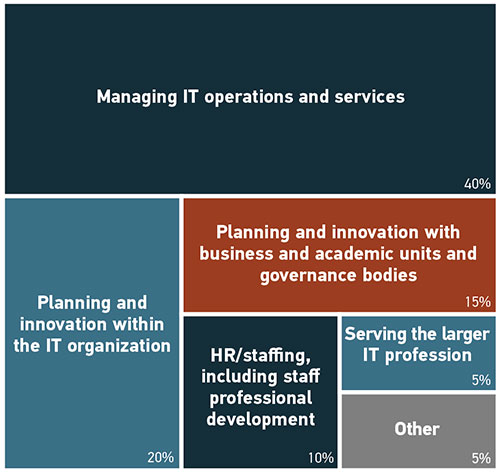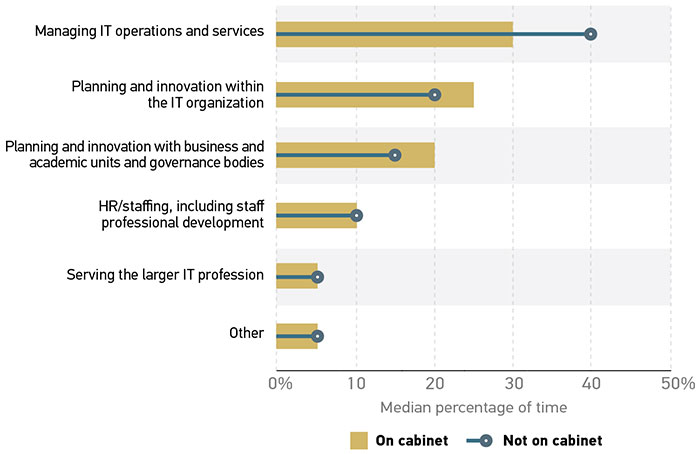A Day in the Life of a CIO
To better understand what a typical day in the life of a CIO looks like, we asked respondents to tell us what percentage of their time they allocate to a host of activities associated with the role. We found that the typical CIO spends the most time (40%) managing IT operations and services—twice the time of the next closest activity, which is planning and innovation within the IT organization (20%) (figure 3). The remainder of the typical CIO's time is divided among planning and innovation with business and academic units and governance bodies (15%); HR or staffing, including staff professional development (10%); serving the IT profession (5%); and other miscellaneous tasks (5%). Compared with data from 2016, the daily work of the typical CIO has not really changed.

However, a day in the lives of the CIOs who have a cabinet post is different from those of their colleagues who are not in this position (figure 4). CIOs without cabinet posts spend significantly more time managing IT operations and services than do those on cabinets. Conversely, CIOs on cabinets are significantly more engaged with strategic endeavors than those not holding cabinet positions. In total, typical cabinet-level CIOs spend about 45% of their time planning and innovating within the IT organization and with business and academic units and governance bodies, while typical non-cabinet CIOs spend just 35% of their time on those activities.

Being on the president's or the chancellor's cabinet does not appear to change fundamentally the job of what a CIO does. Indeed, there is little difference in the order of how the different CIO activities are prioritized; for example, managing IT operations and services is the main job for both the cabinet-level CIO and the non-cabinet-level CIO. But a cabinet position does result in a reallocation of some time to endeavors that are more strategically oriented for the institution. A typical cabinet-level CIO will be expected to be much more involved in campus planning and innovation initiatives.